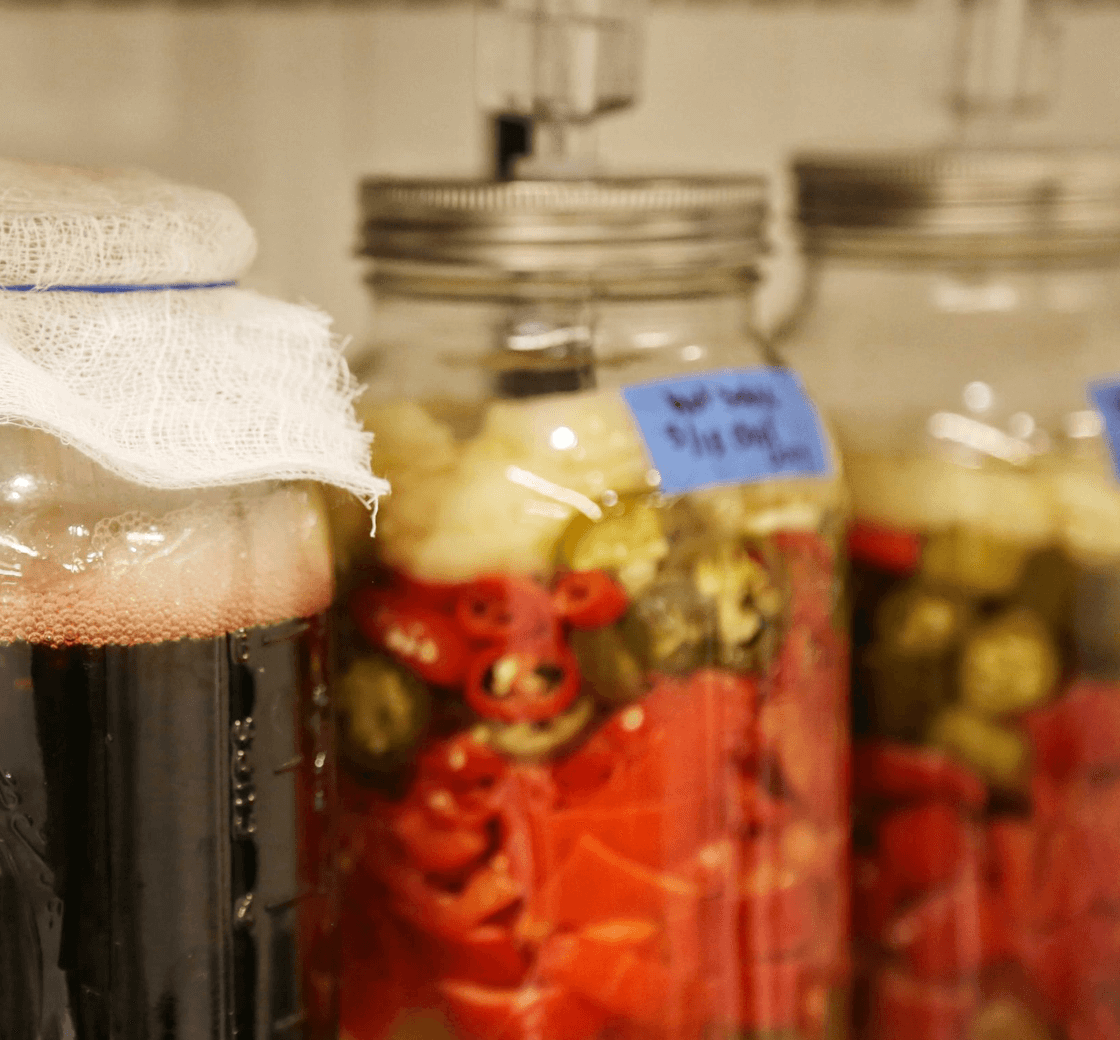
Fermentation is an ancient culinary art praised for its environmental and health benefits, as well as the robust flavors that it yields. In this class, students make four jarred ferments (to take home) then apply the same ferments (created for in-class use) to make dishes they can replicate in their own kitchens. These dishes are Fermented Taqueria Vegetable Nachos; Fermented Pineapple Red Pepper Salsa; Fermented Tomatillo Serrano Goddess Dressing; and Fermented Mango Hibiscus Punch. Through theory and hands-on practice, students will discover fermentation flavor profiles and learn fermentation techniques and safety protocols. (Note: This class is vegan & gluten free.)

You will work in teams to execute the class menu. At the end of class, participants gather to enjoy the food they have prepared. Wine is served with meals in most classes. All class menus are subject to change. While a snack platter is offered in both morning and evening classes, you may want to consider a light snack before joining us for class. Students are encouraged to bring a light lunch or dinner to all pastry classes.

You will work in teams to execute the class menu. At the end of class, participants gather to enjoy the food they have prepared. Wine is served with meals in most classes. All class menus are subject to change. While a snack platter is offered in both morning and evening classes, you may want to consider a light snack before joining us for class. Students are encouraged to bring a light lunch or dinner to all pastry classes.
Do you have a spice blend in your cabinet that you picked up on vacation, but you're not sure how to use it? If you're one of those people, or a cook who would like to incorporate spice blends into your culinary repertoire, then come to ICE for this educational class. We'll travel around the globe as you learn to create spice blends like: Indian masala; Jamaican jerk seasoning; French herbes de provence; and Moroccan ras el hanout. You will then use these aromatic spice blends to prepare: Provençal vegetable gratin; jerk chicken wings; and cauliflower tikka masala.
New York City has some of the most famous steakhouses in the country. These classic establishments are known for a distinctive homey atmosphere and a trademark cuisine that has been pleasing diners for decades. Spend an evening learning the techniques and recipes you need to replicate your favorite steakhouse experience at home. You'll make and enjoy classic shrimp cocktail; Caesar salad; grilled New York strip with beurre Maître d'Hôtel; creamed spinach and truffled mashed potatoes.
If you're ready to take a deep dive into the world of fish butchery, this class is for you. Join us to learn the art of breaking down both round and flat fish with skill and finesse. From perfecting filleting technique to deskinning and deboning, you'll leave with the confidence to handle a variety of fish preparations in your own kitchen. This class will provide a foundation for you to feel confident tackling fish butchery. While not a requirement, it helps to have practiced the skills of Knife Skills 1 before taking this class.
Learn how to make the dumplings from throughout Asia - all hands-on. We'll also create perfect dipping sauces. In this make and take class, you'll prepare: steamed shrimp shao mai with orange dipping sauce; deep fried chicken wontons; pork and chive pot-stickers with black vinegar dipping sauce and vegetable gyoza with spicy dipping sauce.
Ranked as America’s Best Culinary School (USAToday 2019), our roster of Chef-Instructors have run top kitchens around the globe.
| (Separate multiple addresses with commas like: john@aol.com, jane@aol.com) | |